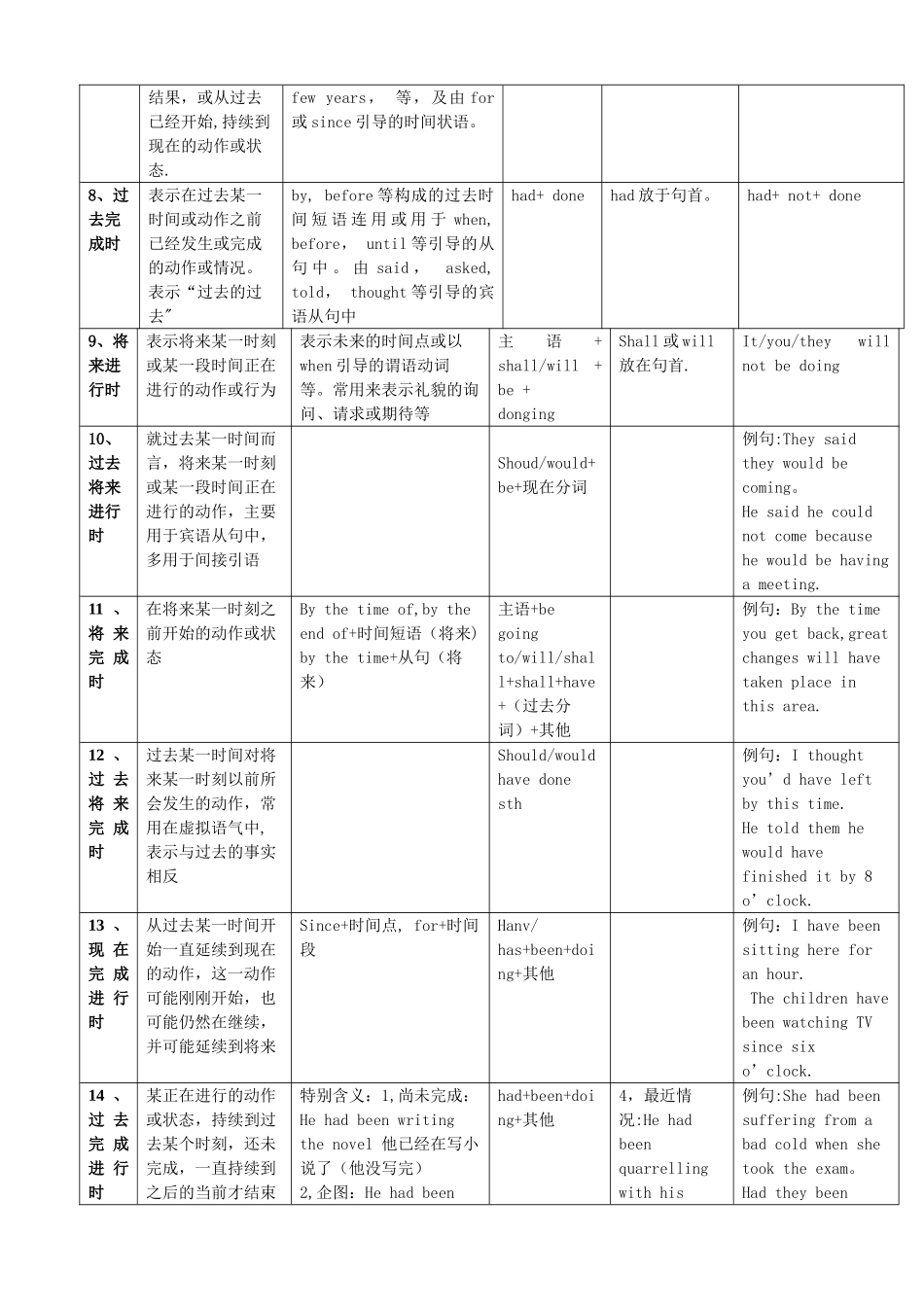英语时态总结表一般时进行时完成时完成进行时现在do/doesam/is/are doinghave/has donehave/has been doing过去didwas/were doinghad donehad been doing将来shall/will doshall/will be doingshall/will have doneshall/will have been doing过去将来should/would doshould/would be doingshould/would have doneshould/would have been doing定义时间状语结构一般疑问句否定句形式1、一般现在时常常、反复发生的动作或行为及现在的某种状况.often, usually, always, sometimes, everyday(week,month),once a week,on Mondays, etc。1。be 动词2。行为动词主语+be+其他1。把动词 be 放于句首.2.用助动词 do提问,如主语为第三人称单数,则用 does,同时还原为动词原形。1.am/is/are+not2。此时态的谓语动词若为行为动词,则在其前加 don’t;若主语为第三人称单数,则用doesn’t,同时还原行为动词。2、一般过去时过去某个时间里发生的动作或状态; 过去习惯性、常常性的动作、行为。ago, yesterday, last week(month, year… ) , in 2000 , just now, one day, long long ago, etc.1. was/were2.行为动词过去式1。把 was 或 were 放于句首.2。用助动词 did提问,同时还原为动词原形。1。主语+was/were+ not2。 在行为动词前加do 在其前加didn’t,同时还原行为动词。3、一般将来时表示将要发生的动作或存在的状态及打算、计划或准备做某事。tomorrow,tomorrow morning/afternoon, the day after tomorrow ,next Sunday/week/year/month, soon, in a few days minutes, etc1。be going to +do2.will/shall+do1.be 放在句首。2。will/shall 提到句首。1.be going to +not+ do2.will / shall +not+ do4、一般过去将来时表示在过去的某个时候看来将要发生的动作或者存在的状态.The next day(morning , year), the following month (week),etc.1。would+do2 。 was/ were going to +do1。would 提到句首。2。was 或 were放于句首.1。would+not+do2.was/were +not+ going to +do5、现在进行时表示现阶段或说话时正在进行的动作或状态。now, at this time, these days, etc。主 语 +am/ is/are +doing把 be 动词放在句首。主语+am/ is/ are +not +doing6、过去进行时表示过去某段时间或某一时刻...


